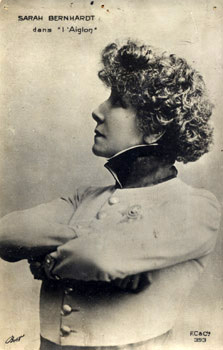p 612 | "
Esther heureuse...": the titles of three of the four sections of
Splendeurs et misères des courtisanes.
p 612 |
Rocambole was the
hero of more than 30 adventure novels written by Alexis
Ponson du Terrail (1829-71), as well as
later writers. The adjective
rocambolesque usually means a fantastic adventure.
p 612 | "...moult sorbonagre, sorbonicole et sorboniforme...": a scathing Rabelaisian way of referring to a pedantic doctor from the Sorbonne, perhaps translatable as "Sorbonnified, Sorbonniculous, and Sorbonniform."

p 612 | "The
quart d'heure de Rabelais...": popular phrase meaning "the moment of reckoning." An explanatory
anecdote from a comic incident from the writer’s life. "One day he was in Lyon and wanted to travel to Paris. He had no money and so he marked several sachets of sugar “Poison for the King” and left them lying prominently around. He was arrested and taken to Paris, thus getting a free ride. King Francis I laughed so hard when he heard about it that he happily paid for the trip." Literally, "the quarter-hour of Rabelais," which is amusingly echoed in Andy Warhol's "15 minutes of fame."
p 613 | "
Chateaubriand aux pommes": Sturrock says this is "Chateaubriand steak served with apple," but I think the
dish is really served with potatoes (
pommes frites, pommes de terres...).
p 613 |
gnōthi seauton : Greek for "Know thyself."
p 613 | Jean-Martin Charcot, 19th century French neurologist.
p 614 | "...holy terror Ovid..." Ovid wrote "Materiam superabat opus" (
Metamorphoses II, 5), or "The workmanship surpassed the material" (form over content).
 |
| Hanska by Delmont |
p 614 | "Meudon... ": Meudon, now part of Paris, was the parish of which Rabelais was the curé; Ferney was the Genevan home of Voltaire; the Vallée-aux-Loups, near Sceaux, was where Chateaubriand lived for several years; Les Jardies was the name of Balzac's house in Villa d'Avray; the "Polish woman" was
Mme Hanska, whom Balzac married in 1850, shortly before his death and the inspiration for many of his characters.
(Sturrock)
p 614 |
Hippolyte Taine complained in a well-known essay on Balzac, that the
Comedie humaine contained too much that was morbid or unnatural, and did not meet his literary concepts of "race, milieu, et moment." See his
Wiki page for an interesting explanation.
p 617 | Zénaïde, French form of
Zenaida, a feminine form of "Zeus."
p 618 |
Diane de Maufrigneuse, main character in Balzac's novel
Les Secrets de la Princesse de Cadignan, part of the
Comedie humaine.
p 620 | "cut a dash" = (Br.) Be stylish or impressive in one’s dress or behavior, e.g. "The Foreign Secretary wanted to cut a dash in Brussels."
p 620 |
Paul Thureau-Dangin (1837-1913) was a Catholic historian, member of the
Académie française.
Gaston Boissier (1823-1908) was a French classical scholar, and secretary of the
Académie française.
p 620 |
Boissier is a
chocolatier, founded in 1827.
p 621 | ...40
bis Boulevard Malesherbes...:
For most of his life (until 1900) Proust lived at 9 boulevard Malesherbes, near the Madeleine church, where the family moved in 1873 after his brother Robert was born. Proust himself had lived with his parents at 9 Boulevard Malesherbes. His maternal grandparents lived at 40
bis rue du Faubourg-Poissonniere.
p 621 | Marc-Joseph-Edgar
Bourdon Vatry (baron de, 1828-1891)

 p 27 | Arquebus : an early muzzle-loaded firearm, sensitive to humidity.
p 27 | Arquebus : an early muzzle-loaded firearm, sensitive to humidity. 









.svg/230px-Escudo_de_Espa%C3%B1a_(mazonado).svg.png)











